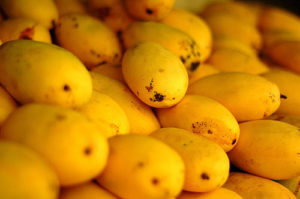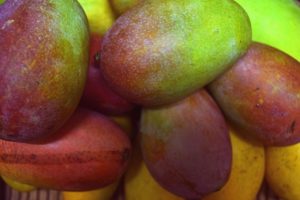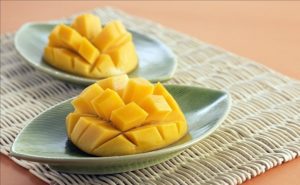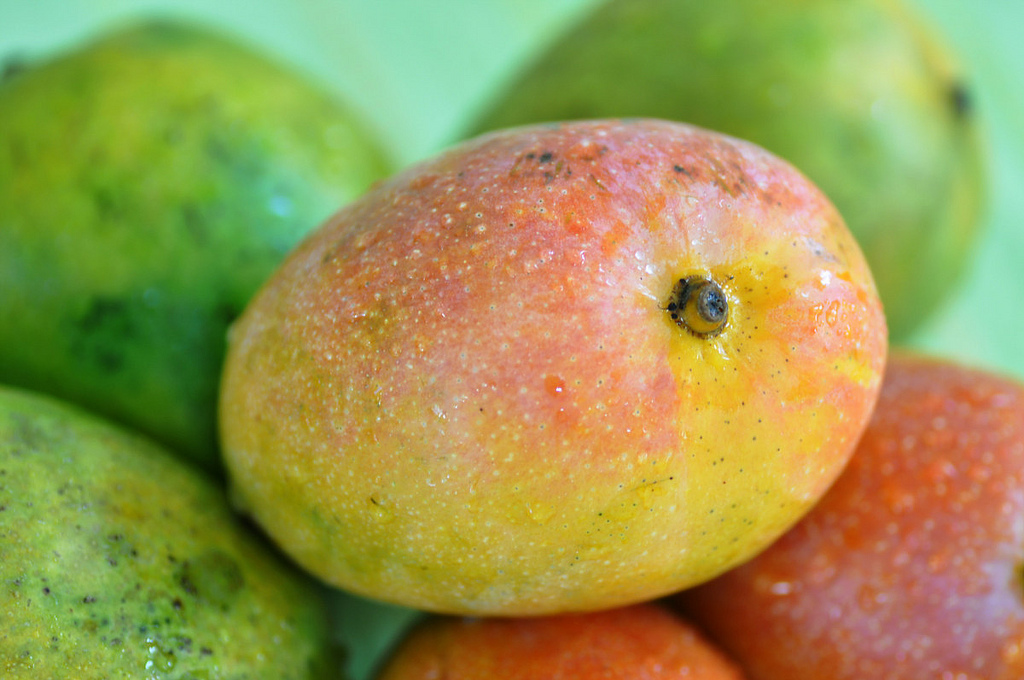Mangoes are juicy stone fruit from numerous species of tropical trees belonging to the flowering plant genus Mangifera, cultivated mostly for their edible fruit. The majority of these species are found in nature as wild mangoes. Take a look below for 28 more fun and interesting facts about mangoes.
1. Mangoes are native to South Asia, from where the common mango or Indian mango, Mangifera indica, has been distributed worldwide to become one of the most widely cultivated fruits in the tropics.
2. Mango is the national fruit of India, Pakistan, and the Philippines, and the national tree of Bangladesh.
3. In India, the harvest and sale of mangoes happens from March to May. This is annually covered by news agencies.
4. The Mughal emperor Akbar is said to have planted a mango orchard having 100,000 trees in Darbhanga, eastern India.

5. In Hinduism, the perfectly ripe mango is often held by Lord Ganesha as a symbol of attainment, regarding the devotees’ potential perfection.
6. Dried mango skin and its seeds are used in Ayurvedic medicines.
7. Mango leaves are used to decorate archways and doors in Indian houses and during weddings and celebrations, such as Ganesh Chaturthi.
8. In Andhra Pradesh, mango leaves are considered auspicious and are used to decorate front doors during festivals.
9. In Tamil Nadu, the mango is referred to as one of the three royal fruits, along with the banana and jackfruit, for their sweetness and flavor. This triad of fruits is referred to as ma-pala-vazhai.
10. In the West Indies, the expression “to go mango walk” means to steal another person’s mango fruits. This is celebrated in the famous song, “The Mango Walk.”

11. In Australia, the first tray of mangoes of the season is traditionally sold at an auction for charity.
12. Mangoes, although they were almost unheard of in China before, were popularized during the Cultural Revolution as symbols of Chairman Mao Zedong’s love for the people.
13. Humans have created over 400 varieties of mango through selective breeding.
14. According to the legend, Buddha meditated in the shadow of the mango tree.
15. The mango tree is a tall, evergreen plant that can reach 115 to 130 feet in height. Its crown has a diameter of 33 feet.
16. The mango tree has narrow, leathery leaves. They are dark green in color and are alternately arranged on the branches.
17. The mango tree has a strong root that grows 20 feet deep into the ground. The root is designed to absorb water and nutrients from the well drained sandy soils.

18. Mango develops small, white or pink flowers that consist of 5 petals. Individual flowers are a part of the branches inflorescence.
19. Mango flowers are pollinated by wind or by insects such as different types of flies, moths and butterflies.
20. Mango trees start to produce fruit after four years. Some trees can produce fruit even after 300 years.
21. Mango becomes fully ripe after 3 to 6 months. Commercially available mango is harvested green to prevent rotting of the fruit while it’s on its way to the supermarkets around the world.
22. India is the biggest producer of mango in the world. 60% of the world’s mango is produced in India.
23. Mango is a rich source of potassium, vitamin C and vitamin A. It also contains a high amount of dietary fibers, which facilitate digestion.
24. Mango can be eaten raw or in the form of juices, ice creams, milkshakes and different types of salty and sweet dishes.

25. Compounds isolated from mango leaves, bark, skin and seed are used in traditional Indian medicine. Latest studies suggest that these compounds may prevent development of diabetes and decrease high blood cholesterol level.
26. Oils isolated from mango leaves and tree sap can produce contract dermatitis in sensitive individuals.
27. Mango juice can be used as a marinade because it softens the texture of meat.
28. The English word “mango” originated from the Malayalam word “manna” via Portuguese “manga” during the spice trade with Kerala in 1498.





One Comment
Pingback:
March 16, 2018 at 10:58 am